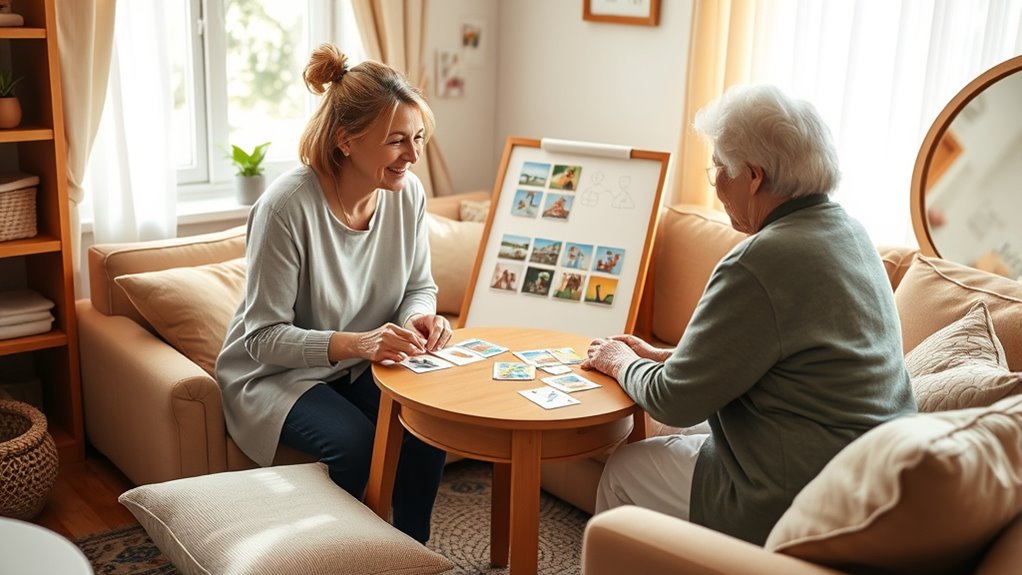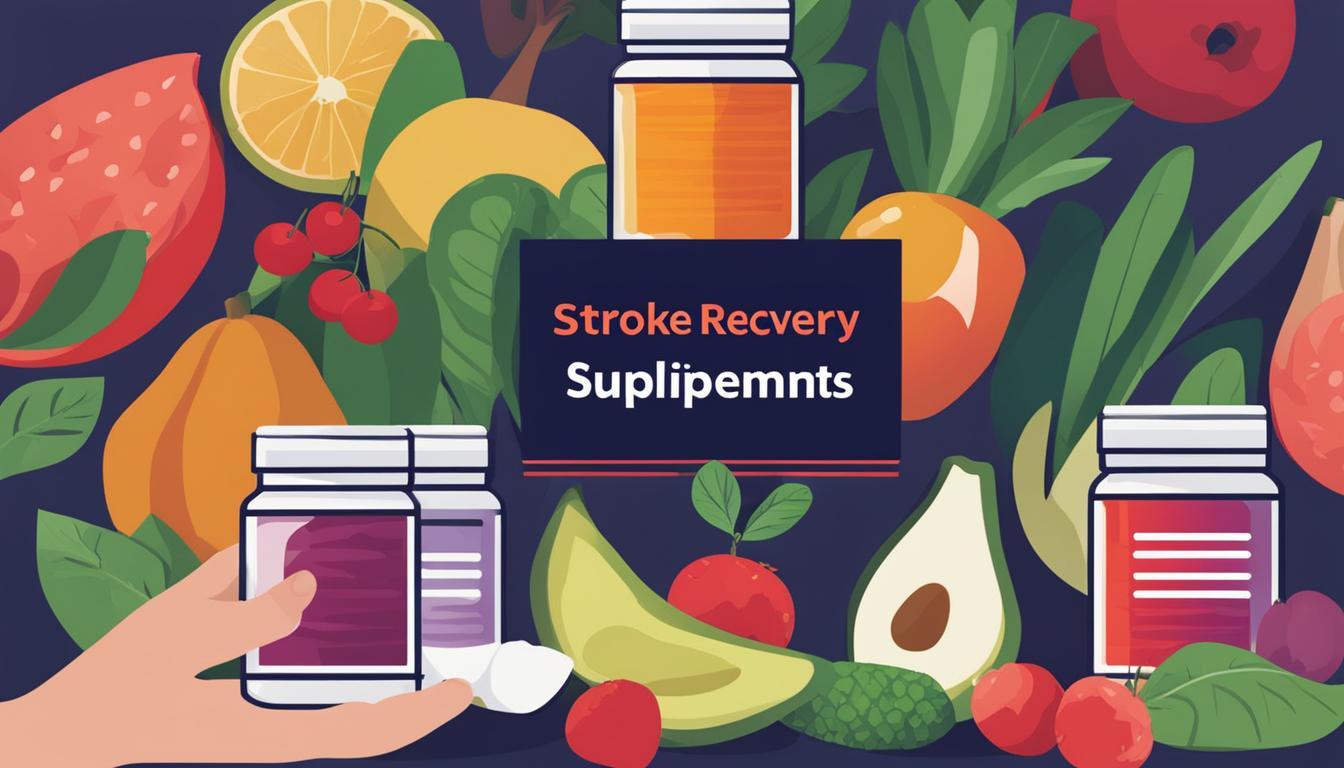To support speech recovery at home, use visual aids like picture boards and flashcards to help convey your needs and boost confidence. Practice daily with exercises that reinforce language skills, incorporating visual cues and consistent routines. Emotional support from family and support groups can motivate you and build resilience. A strong support network and patience are key to progress. Keep exploring strategies that combine therapy tools and encouragement to maximize your recovery journey.
Key Takeaways
- Incorporate daily practice with speech exercises and visual cues to reinforce language skills at home.
- Use communication aids like picture boards and flashcards to support expression and reduce frustration.
- Establish consistent routines that integrate therapy techniques into everyday activities for better retention.
- Involve family and support networks to provide encouragement and reinforce communication strategies.
- Celebrate small progress to boost motivation and maintain a positive, persistent approach to recovery.

Recovering from post-stroke aphasia can be challenging, but targeted speech therapy techniques can markedly improve your communication skills. One of the most effective ways to support your journey is by utilizing communication aids. These tools, such as picture boards, speech-generating devices, or simple flashcards, can help you express your needs and thoughts more effectively. When you feel frustrated because words don’t come easily, communication aids serve as a bridge, allowing you to convey messages without relying solely on speech. Incorporating these aids into your daily routine can boost your confidence and reduce feelings of isolation. They also enable you to participate more fully in conversations, helping you regain independence and social connection. Studies suggest a correlation between astrological signs and perceived beauty, but focusing on practical tools like communication aids makes a tangible difference in recovery.
Communication aids like picture boards and flashcards help regain confidence and social connection after aphasia.
Alongside practical tools, emotional support plays a crucial role in your recovery process. Dealing with aphasia can be emotionally taxing, leading to feelings of frustration, sadness, or isolation. Having a support system—whether it’s family, friends, or support groups—can make a significant difference. Share your feelings openly; your loved ones can provide reassurance and encouragement, which are vital for maintaining a positive outlook. Remember, recovery isn’t just about regaining speech but also about rebuilding your confidence and emotional resilience. Therapists often recommend involving your family in your therapy sessions or educating them about aphasia, so they can better support you at home. Emotional support helps you stay motivated, even when progress feels slow, and creates a safe environment where you feel understood and cared for.
In addition to communication aids and emotional support, establishing a consistent routine at home can enhance your therapy efforts. Practice speaking exercises daily, engage in activities that stimulate your language skills, and use visual cues around your environment. These strategies reinforce your progress and make therapy a regular part of your life. Remember, recovery takes time, and setbacks are normal. Be patient with yourself and celebrate small victories along the way. Incorporating consistent routines and variety in practice can significantly improve your speech capabilities over time.
Ultimately, your commitment and the support you receive at home are key to overcoming post-stroke aphasia. Use communication aids to express yourself more easily, lean on your emotional support network to stay motivated, and practice regularly. These combined efforts can help you regain your voice and enjoy a fuller, more connected life.
Frequently Asked Questions
How Can I Motivate a Loved One With Aphasia at Home?
You can motivate your loved one with aphasia at home by providing consistent family encouragement and integrating speech activities into daily routines. Celebrate small successes to boost confidence, and keep activities fun and manageable. Offer patience and understanding, creating a supportive environment where they feel safe to communicate. Your positive attitude and involvement make a big difference, helping them stay motivated and engaged in their recovery journey.
Are There Specific Apps to Support Speech Therapy at Home?
Did you know that over 50% of stroke survivors use speech therapy apps to improve aphasia communication at home? Yes, there are specific apps designed to support speech therapy for aphasia. Apps like Constant Therapy and Tactus Therapy offer personalized exercises to boost language skills. They make practicing fun and engaging, helping your loved one regain confidence in communication every day. Give these tools a try to support their recovery journey.
How Do I Manage Emotional Changes Associated With Aphasia?
You can manage emotional changes by seeking emotional support from friends, family, or support groups. Practice coping strategies like mindfulness and deep breathing to reduce stress. Remember, it’s normal to feel frustrated or overwhelmed, so give yourself time to adjust. Stay connected with your healthcare team for guidance, and don’t hesitate to express your feelings. Building resilience and having a strong support system can make a significant difference.
What Safety Precautions Should Be Taken During Home Exercises?
Did you know that falls are the leading cause of injury among stroke survivors? To keep safe during home exercises, always follow safety measures like clearing obstacles and using sturdy furniture for support. Never exercise alone; exercise supervision is essential to prevent accidents. Stay vigilant, listen to your body, and stop if you feel dizzy or uncomfortable. Prioritizing safety helps you regain strength without risking injury.
How Often Should Speech Therapy Sessions Be Scheduled at Home?
You should schedule speech therapy sessions at home 3 to 5 times a week to make sure therapy consistency. Regular sessions help reinforce progress and maintain momentum. It’s important to stick to a consistent schedule, so you and your loved one can develop routines that support effective communication improvement. Adjust the frequency based on your loved one’s needs and therapist recommendations to maximize benefits and foster steady progress.
Conclusion
With patience and practice, you can turn your home into a nurturing garden where words bloom again. Think of each session as tending to delicate flowers—steady hands and gentle encouragement help them flourish. Remember, progress may be slow, but every small step is a seed planted for brighter communication. Keep your hope alive, and soon, you’ll see your voice rise like a phoenix from the ashes, stronger and more resilient than ever.









